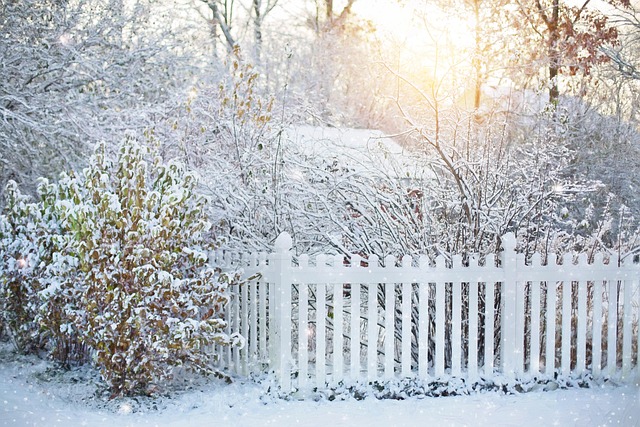New Bedford, Massachusetts, boasts a rich architectural heritage, and its ornamental fencing styles reflect this. This article delves into the historical evolution of fencing in New Bedford, exploring popular designs that adorn the city’s landscapes. We’ll highlight diverse ornamental fencing styles, focusing on materials like iron, wood, and vinyl, each offering unique benefits. Additionally, practical installation tips will guide homeowners and professionals alike to ensure long-lasting aesthetic appeal and structural integrity.
- Historical Overview of Fencing in New Bedford
- Popular Ornamental Fencing Styles
- Fencing Materials and Their Benefits
- Installation Tips for Longevity & Aesthetics
Historical Overview of Fencing in New Bedford
New Bedford, Massachusetts, like many American cities, has a rich history when it comes to fencing. The early days of the city saw the use of simple wooden fences, primarily designed to keep crops safe from animals and mark property boundaries. These fences were often constructed using local materials, reflecting the region’s agricultural heritage. As New Bedford grew and industrialized, so did its fencing styles. Iron and steel became more prevalent in the mid-19th century, leading to the introduction of ornamental fencing.
The Victorian era brought a wave of ornate metalwork to New Bedford’s landscapes, with intricate designs and elaborate patterns adorning fences throughout the city. This period saw the rise of decorative ironwork, where skilled artisans crafted beautiful, often complex designs that blended functionality with aesthetic appeal. These ornate fences not only served as boundaries but also became a form of artistic expression, showcasing the craftsmanship and creativity of the time.
Popular Ornamental Fencing Styles
In New Bedford, MA, several ornamental fencing styles have gained popularity for both residential and commercial properties due to their aesthetic appeal and functional benefits. One widely favored style is the traditional wrought iron fence, known for its elegant curves and intricate designs. These fences not only add a touch of classic beauty but also provide robust security. The versatility of wrought iron allows for customization, making it possible to incorporate family crests or personalized motifs.
Another trendy option is the wooden picket fence, which offers a charming and nostalgic look. While often associated with suburban homes, picket fences have seen a resurgence in popularity due to their ability to enhance curb appeal and provide a sense of privacy without obstructing views. For those seeking something unique, modern aluminum fencing with sleek lines and various artistic patterns offers both durability and contemporary design elements, making it an excellent choice for properties aiming to stand out.
Fencing Materials and Their Benefits
In New Bedford, MA, when choosing an ornamental fencing style, understanding the materials used is key to making an informed decision. Traditional options include wood, metal, and vinyl. Each material offers unique benefits. Wood, for instance, provides a natural aesthetic and can be customized to suit various design tastes. However, it requires regular maintenance such as staining or painting to protect against weather damage. Metal fences, often made of iron or aluminum, offer durability and a wide range of intricate designs. They’re low-maintenance and resistant to rot, but can be more expensive and less flexible in terms of customization. Vinyl fencing is a popular choice for its affordability, ease of installation, and low-maintenance nature—it doesn’t require painting or staining like wood and is more resistant to rust than metal. Despite being less customizable, vinyl fences offer a variety of styles that can enhance any property.
Installation Tips for Longevity & Aesthetics
When installing ornamental fencing in New Bedford, MA, the key to longevity and aesthetic appeal lies in several practical steps. First, ensure proper preparation of the ground, including leveling and compacting the base to support the fence’s weight. Use high-quality materials such as durable metals or rot-resistant woods to prevent premature decay or warping. Proper spacing between posts is crucial for stability, allowing for adequate soil compaction around each footings.
Regular maintenance is equally important. Apply protective coatings or stains to metal fences to ward off rust and corrosion, preserving their luster over time. For wooden fences, sealants can protect against moisture damage and insects, ensuring the wood remains strong and visually appealing. Regular cleaning and inspection will also help identify any issues early on, allowing for prompt repairs that maintain both structural integrity and the fence’s attractive design.
